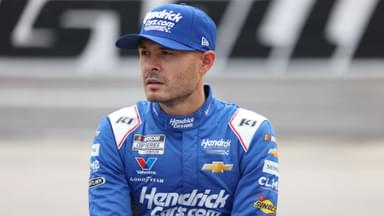The spring race at the Bristol Motor Speedway this season saw unprecedented levels of tire wear. It made for an entertaining race, even though the fall-off was too extreme for the drivers to manage. In Sunday’s race, that did not happen at all. The fall-off wasn’t anywhere near what it was in the previous race. It’s no secret that Goodyear was trying to somewhat replicate that so why didn’t it happen at all? As per Denny Hamlin, it was due to antiquated means of making the compounds.
Advertisement
Goodyear’s street tires are made with the latest technology and are unbelievably precise. However, the race tires are made a lot more manually which leaves a lot of room for human errors. Mixing the chemicals and making tire compounds with a machine makes it a lot quicker and more precise.
Hamlin said that representatives from Joe Gibbs Racing and 23XI Racing were shocked to see how imperfect the process was. It could be why there was such a big difference between how the tires behaved on the same track.
“What I hear is that where they make the racing tires is very antiquated versus how they make new street Goodyear tires,” Hamlin said on his podcast. “In the racing, I think that there is something with like unions and labor where they have to use more manpower…I’ve had people from my team, people from 23XI go and visit Goodyear and they were shocked at what they walked into.”
The lack of tire drop-off was noticed by several drivers during the practice and qualifying sessions ahead of the Bass Pro Shops Night Race. Several expressed their dissatisfaction over there not being any drop-off at all as they expected something similar to the spring race.
Drivers were not happy with the tires ahead of the Night Race
Another factor that played a part in the inconsistent tire performance was the track. There was rubber build-up on the track and the presence of PJ1 or resin this time around on the surface. That was not the case last year. Even so, drivers were not happy with how things were looking ahead of the race.
“I don’t know what in the world’s going on. We went from not thinking we could make 40 laps to thinking we can run 1000 laps on tires,” veteran race car driver Brad Keselowski said. Alex Bowman felt like it had gone back to being the same old Bristol everyone was familiar with. “I didn’t really see any unusual wear, they don’t fall off that much. Definitely curious to what the variable is there. I think we’re kind of normal Bristol again,” he said.
The race ended in a way that would suggest the same as well. Kyle Larson took the checkered flag after an utterly dominating performance in which no one got much of a chance at passing him for the lead. It seems like the Next-Gen car’s short-track woes are still far from being sorted.








